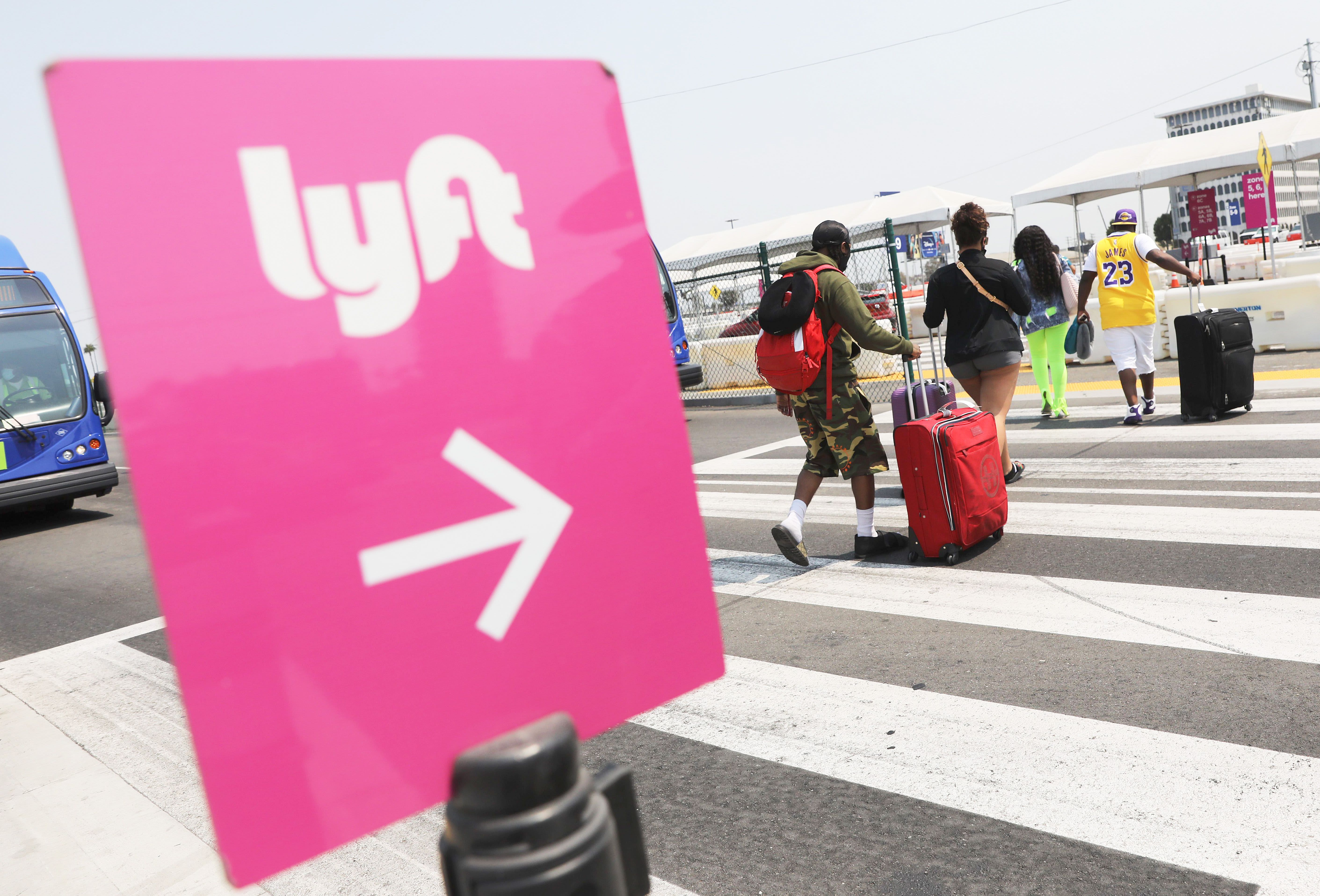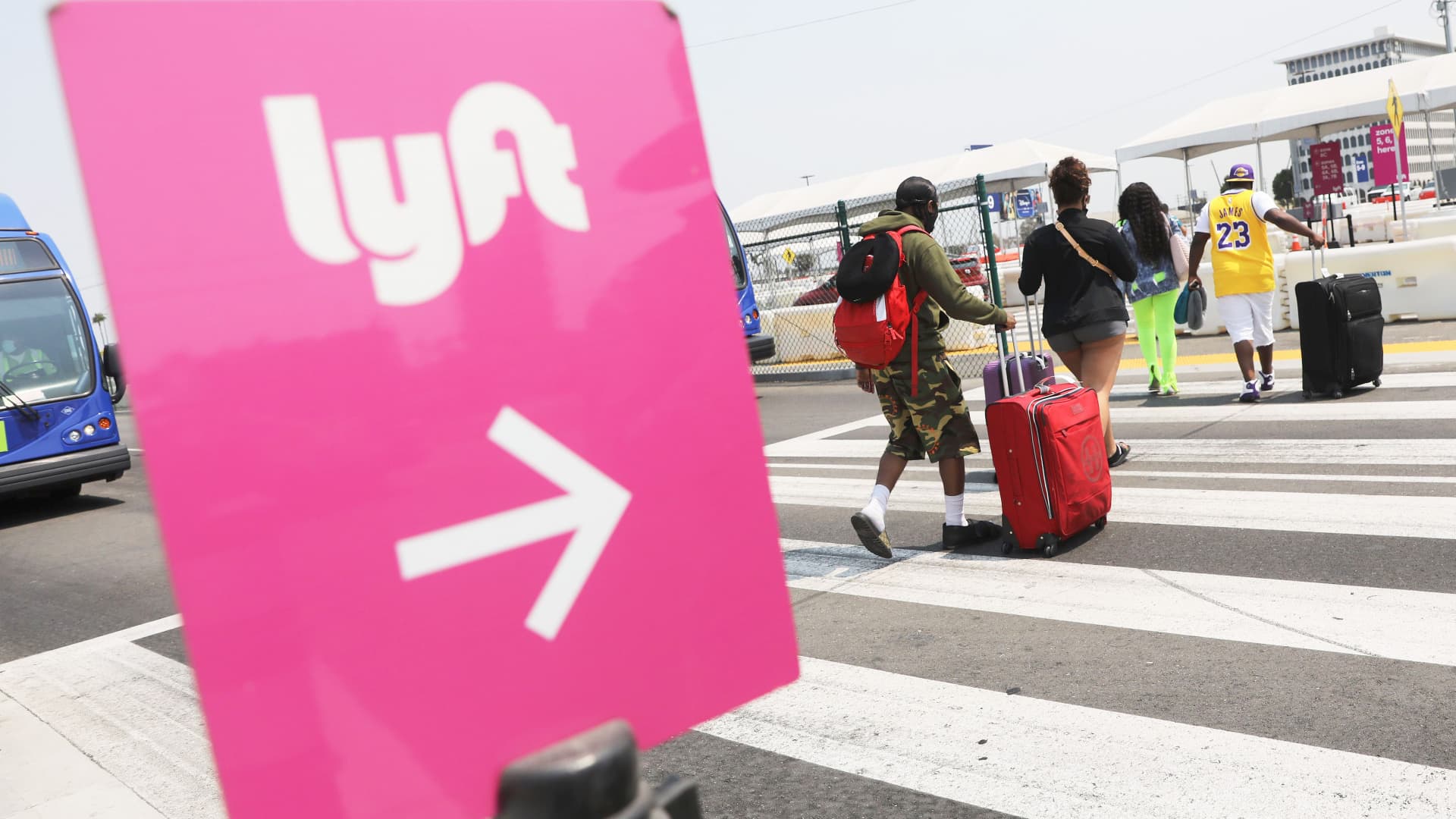Products You May Like
Lyft shares fell more than 30% during after-hours trading after issuing weak guidance in its earnings report on Thursday.
Here are the key numbers Lyft reported for its fiscal fourth quarter of 2022:
- Earnings per share: 29 cents per share, adjusted, vs. 13 cents per share expected in a Refinitiv survey of analysts.
- Revenue: $1.18 billion, vs. $1.16 billion, according to analysts surveyed by Refinitiv
related investing news




Lyft said it expects to make roughly $975 million in revenue in the fiscal first quarter of 2023, lower than the $1.09 billion analysts anticipated, according to StreetAccount. Lyft also expects to make an adjusted EBITDA between $5 million and $15 million in the first quarter.
“Our Q1 guidance is the result of seasonality and lower prices, including less Prime Time,” CFO Elaine Paul said in a statement in the earnings release, referring to the period where there’s more demand from passengers than drivers and when the company can earn more. “Additionally, our different insurance renewal timing puts differently timed pressure on our P&L. We are not waiting for that to normalize to achieve competitive service levels. We are focused on driving greater growth and profitability.”
The rideshare company recorded 20.3 million active riders in the third quarter, effectively flat from the third quarter but up 8.7% year over year. That figure also remains below pre-pandemic levels. In the fourth quarter of 2019, for example, Lyft had 22.9 million active riders.
Revenue of $1.18 billion was up 21% from the $969.9 million posted in the year-ago quarter.
Per SEC guidance issued in December to all public companies, Lyft said it’s revising how it calculates its non-GAAP financial measures to include insurance reserve adjustments for prior periods, impacting its adjusted EBITDA. It provided restatements for those results in its supplemental earnings document.
“Under our updated non-GAAP calculation, Adjusted EBITDA was a negative $248.3 million versus a negative $47.6 million in the fourth quarter of 2021 and a negative $26.7 million in the third quarter of 2022,” Lyft said.
The company reported a net loss of $588.1 million, or $1.61 a share for the quarter, more than twice the loss it posted in the year-ago quarter. It attributed $201.3 million of that to stock-based compensation and related payroll tax expenses.
Lyft began its restructuring in November in an effort to reduce operating expenses as it continues to face macroeconomic challenges. It said the costs associated with the restructuring efforts don’t reflect the performance of Lyft’s ongoing operations, however.
Conversely, Uber reported earnings on Wednesday that beat analyst estimates. Uber posted its strongest quarter ever, with revenue up 49% year over year. It said the number of active drivers on the road hit an all-time high during the quarter and that it surpassed 2 billion trips in a single quarter for the first time.
Note: This story has been updated with figures comparable to analyst estimates.
